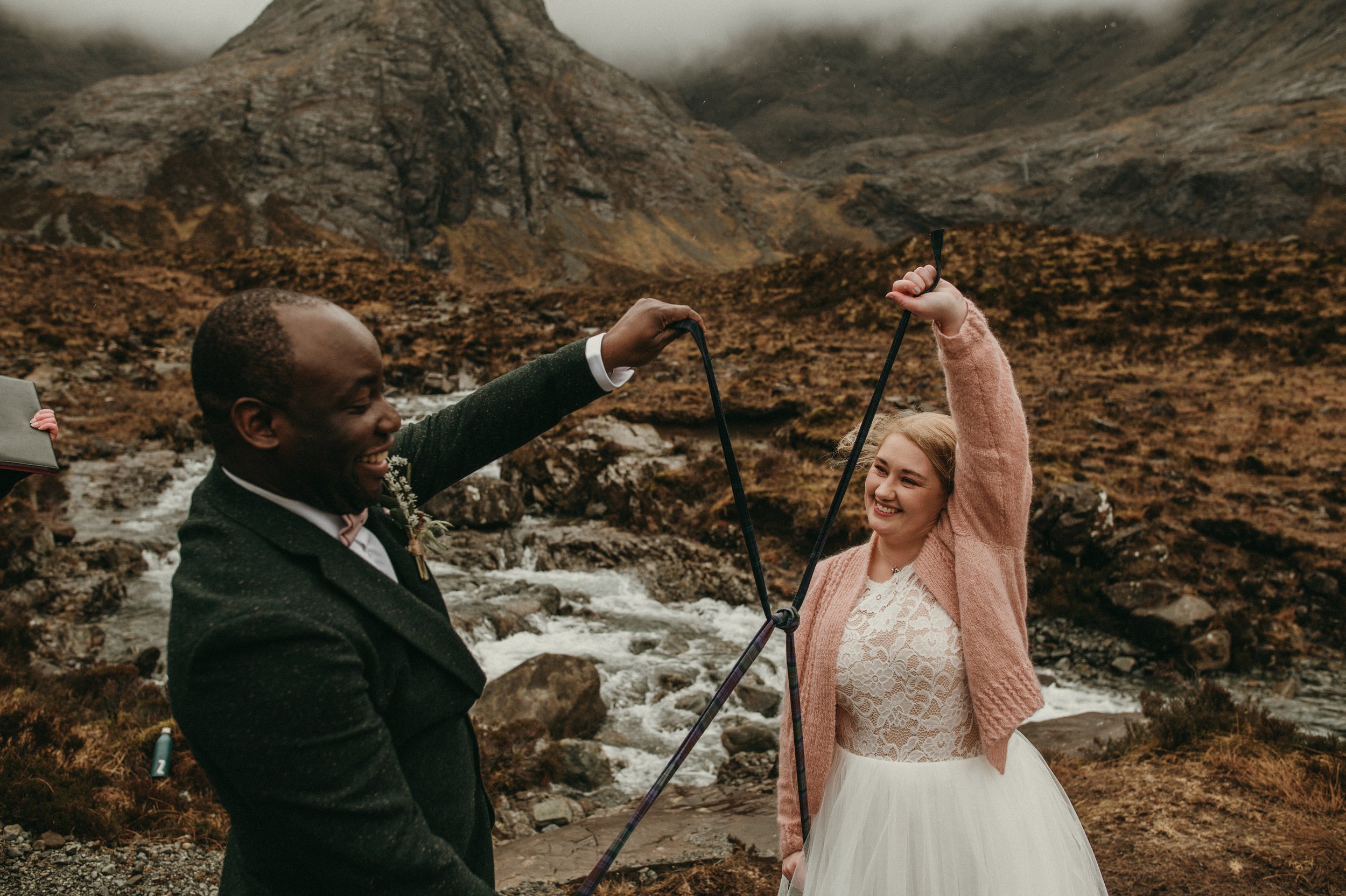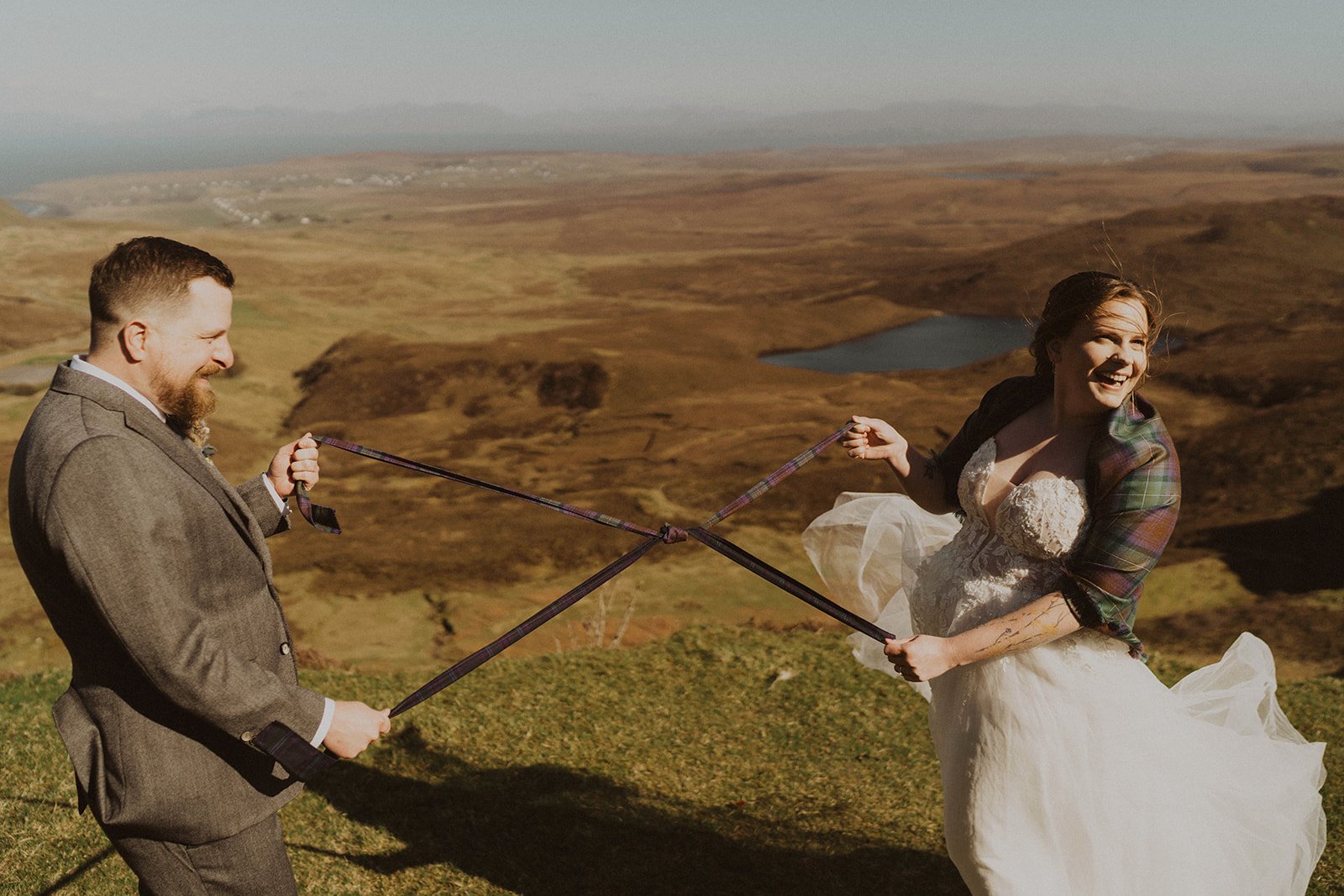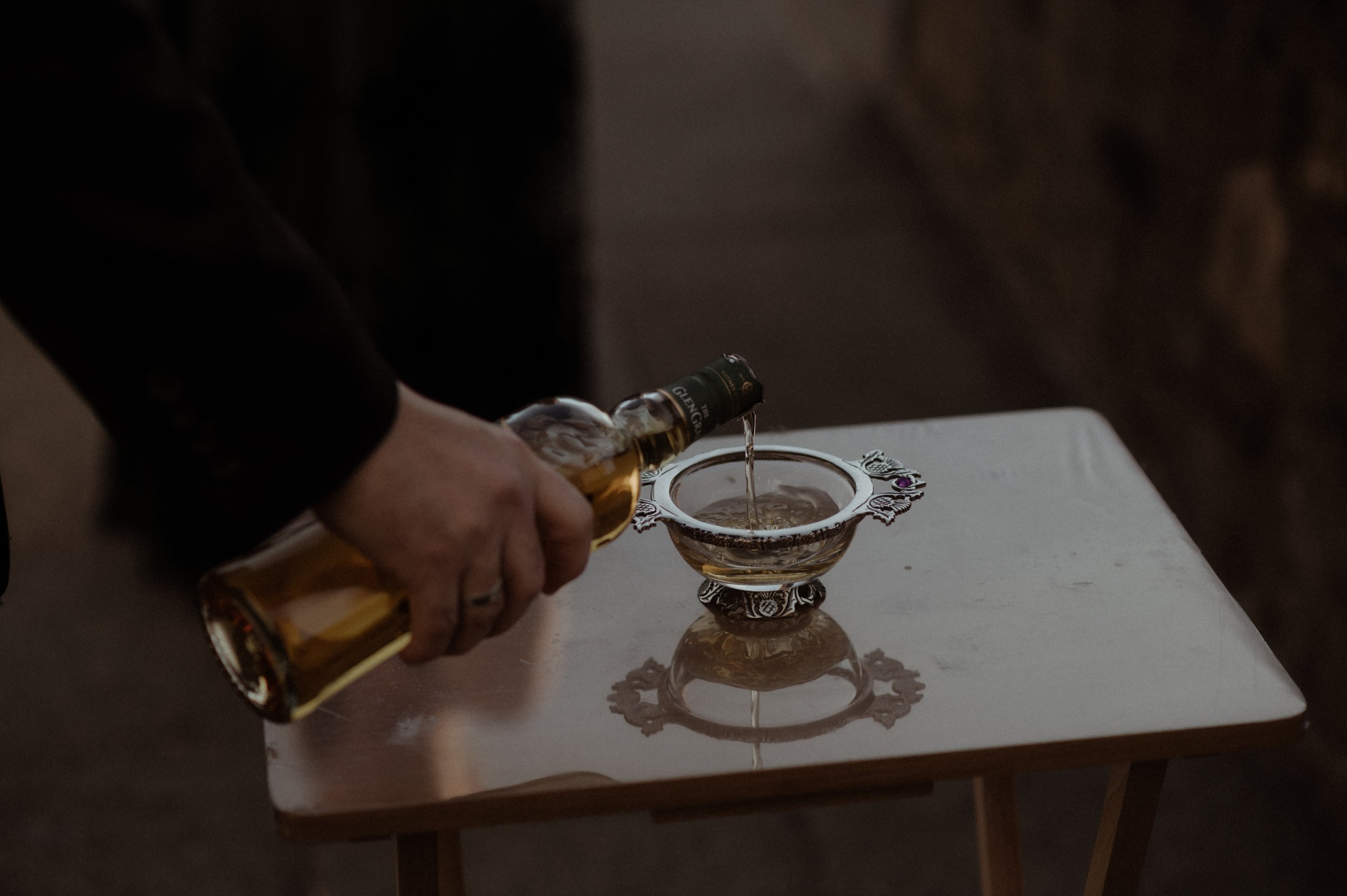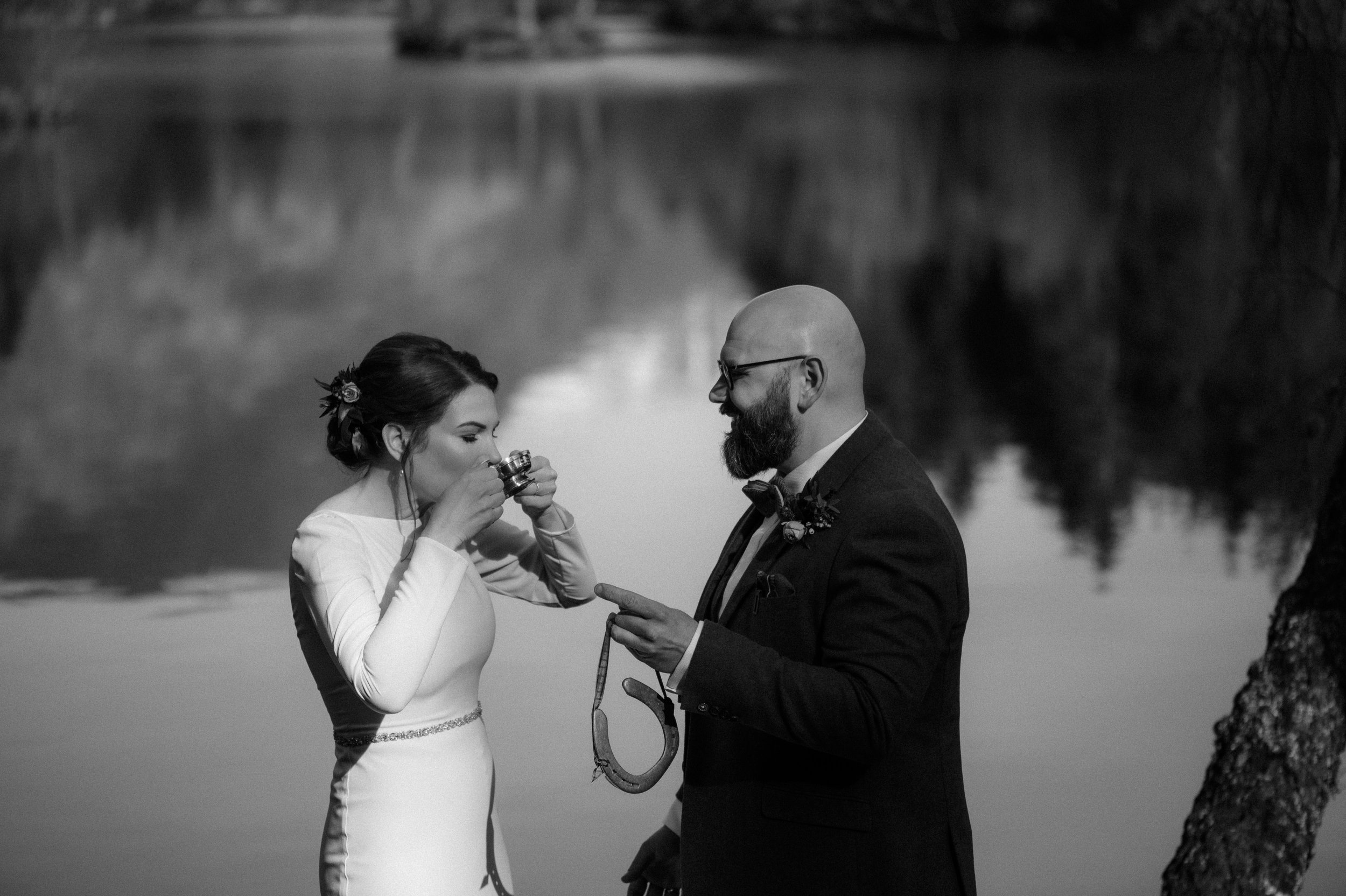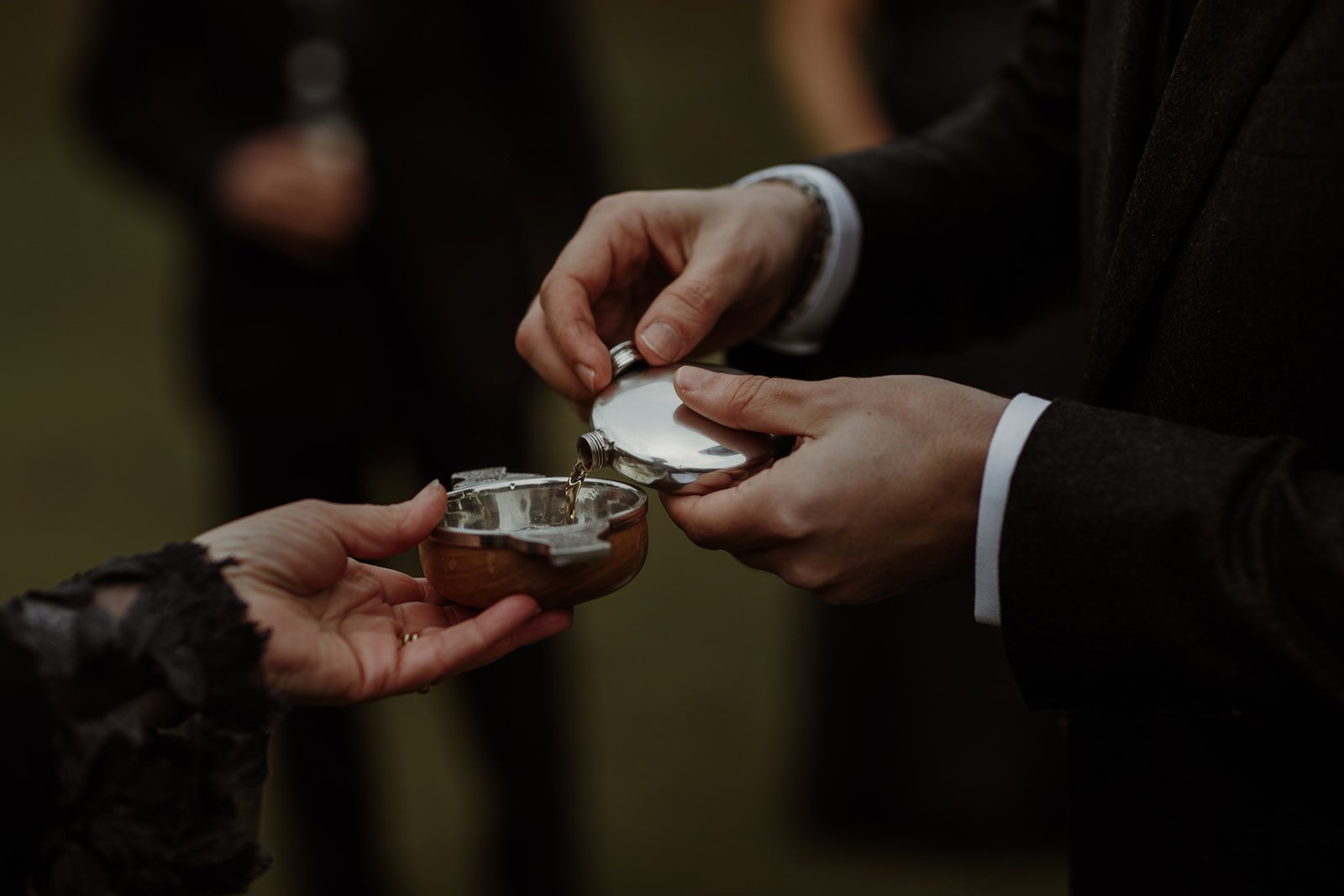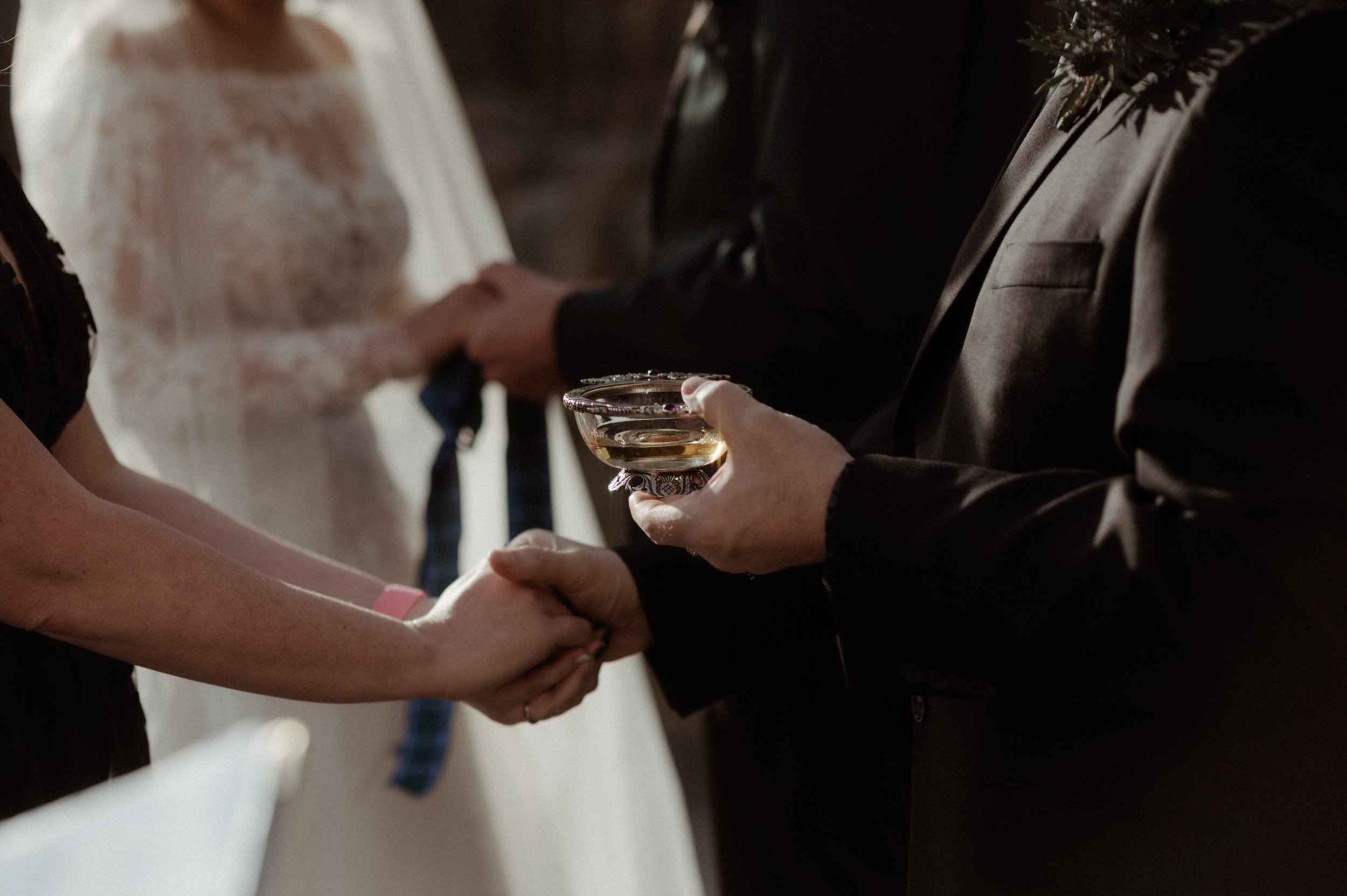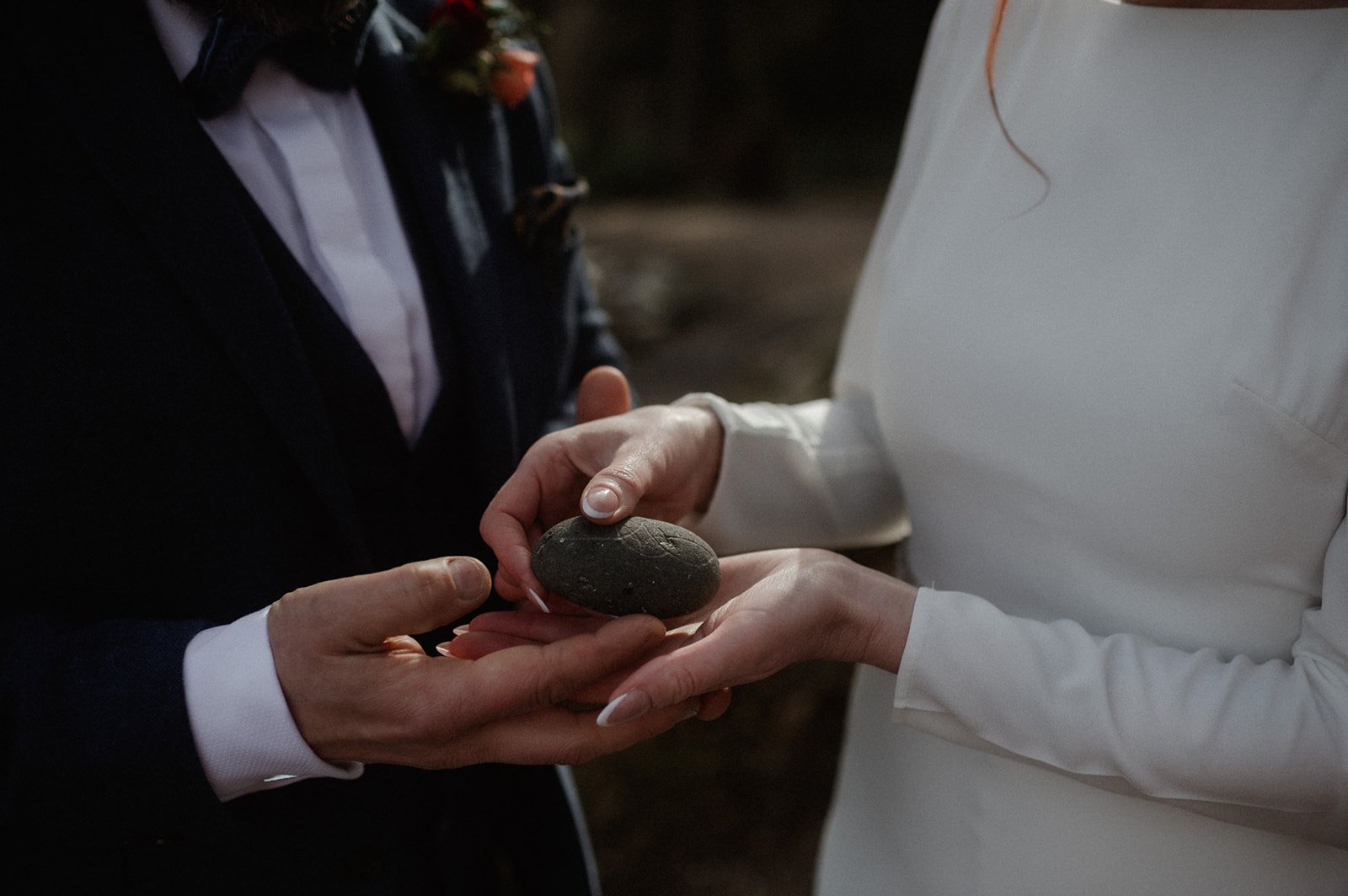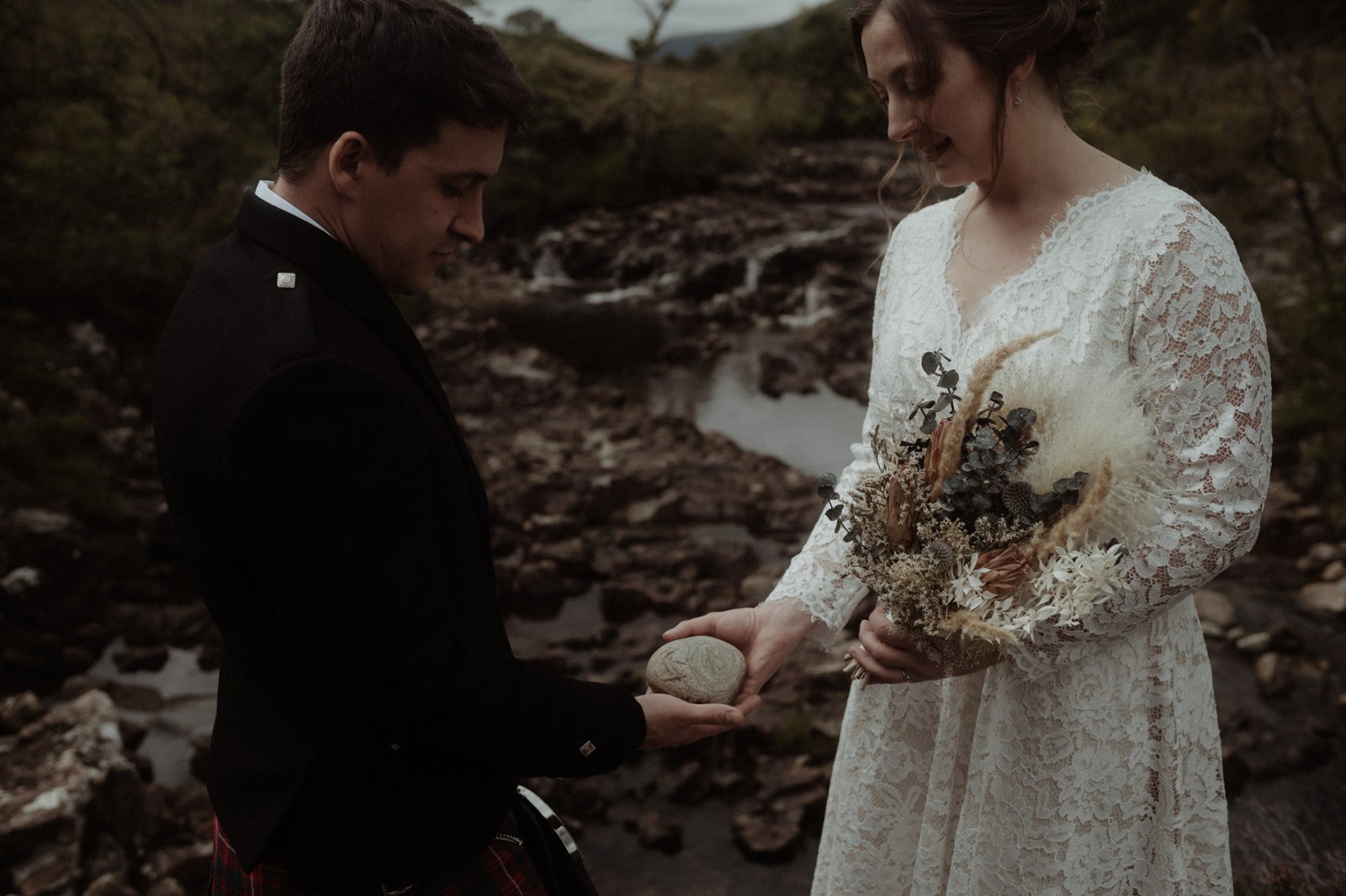Eight Scottish traditions to consider for your elopement
Have you always dreamt of having your very own traditional Scottish Wedding?
Weddings are engrained in Scottish folklore, carrying many age-old traditions to provide good luck for the future of the bride and groom’s marriage, whilst paying respect to Scottish culture. If you have ever been lucky enough to visit Scotland and its people, you will know that they have strived to cling to their culture and heritage for centuries.
As a result, there are lots of ways to incorporate and embrace Scottish wedding traditions and culture into your elopement.
Image by - Courtney Marie Photography
Kilt Wearing
Kilts are the embodiment of Scottish culture. If you are opting for an authentic Scottish Wedding – kilts are at the forefront. If you have watched the well-known tv series Outlander, you may be familiar with the history of the attire. The fashion statement soared throughout society in the late 16th century to symbolise the clan that the highland men belonged to. However, the defeat of the Jacobites at Culloden in 1746 resulted in the banning of kilts which lasted for nearly 40 years. As a result, the tradition was born for Scottish men to wear kilts to formal events and engagements. Traditionally the groom and groomsmen would wear the colours of their family tartan to represent and pay homage to the heritage of their clan, otherwise known as their surname. However, a simple Google search instantly finds your family tartan, or you may have to do a bit of family tree work to trace your clan roots. Nonetheless, you can simply just choose whichever tartan you prefer.Six Pence in the Brides Shoe
Traditionally, the Father of the Bride would place a sixpence into his daughter’s shoe prior to giving her away. This symbolises that the father wishes prosperity and financial security for his daughter upon her marriage. However, sixpences are outdated and uncommon nowadays, therefore there are many different takes on this, most commonly a penny is used instead. Hand Fasting
Image by - The Ferros
Hand Fasting is an old Celtic custom, which acted as a temporary or probationary period of marriage until a Priest visited a village to formally marry the couple. This is because it was common in rural villages for a Priest to only visit every few months, or even years. If the legal binding of the bride and groom’s hands and their declaration of love was witnessed by two other adults, it became a legal practice, and remains to this day. The practice involves tying the couple’s hands together with a cloth (typically a piece of one of their clan’s tartan) as a symbol of the connection of the two families. Hand Fasting remains popular, particularly if you are not opting for a religious ceremony and is often used with a piece of cloth or ribbon, sometimes with calligraphic writing engrained. Essentially, hand fasting is where the well-known phrase “tying the knot” originates from. Images by - The Ferros Andrew Rae Raini Rowell Tamar Hope
Caim
The Caim is a prayer said in a sacred circle, with the intention of protecting the bride and groom at the time of their marriage. The circle represents wholeness, community and connection to the greater universe. Historically, this circle was drawn with a sword around the couple. Today, brides and grooms can create their own prayers, similar to their wedding vows, or they can choose a Celtic prayer if they want to incorporate a historical element. Bagpipes
Traditionally, bagpipes are played when the wedding guests are arriving and leaving the ceremony. The skirl of the bagpipes was historically perceived as a deterrent to evil spirits, and therefore played to protect the bride and groom as they began their marriage and to bless them with eternal good luck. “Scotland the Brave” is a Scottish patriot song, one of several often regarded as the unofficial Scottish national anthem. The others include Flower of Scotland, Auld Lang Syne, Loch Lomond and Mairi's Wedding. Image by - Andrew Rae
“You’ll take the high road and I’ll take the low road, And I’ll be in Scotland afore you. Where me and my true love will never meet again, On the bonnie, bonnie banks of Loch Lomond. ”
Quaich
Quaichs have been used at Scottish wedding ceremonies for centuries. A two-handled silver or wooden cup, the Quaich is also referred to as a “love cup,” as the married couple each take hold of a handle and drink from it together as a symbol of trust. Often two drinks are mixed together in the quaich, one of the groom’s choice and one of the bride’s choice. Again, this symbolises the joining of two families, and the mixing symbolises togetherness. Traditionally, the Quaich is filled with whisky, however you can easily choose a drink of your own preference. Images by - Sean Bell, Raini Rowell & The Ferros
Image by - David Conaty
Lucky Sprig of Heather
Wild Scottish Heather is in abundance throughout the Scottish hills, growing freely across five million acres of moorland, glens and hills. Legend has it that in the 3rd Century AD, Malvina, daughter of the legendary Scottish Poet, Ossian, was engaged to be married to a Celtic warrior named Oscar. Sadly, Oscar suffered ill fate in battle, leaving Malvina heartbroken. When Malvina received the devastating news from a messenger, a sprig of purple heather which Oscar had sent as a final gesture of his everlasting love for her was included. According to legend, it is said that Malvina’s tears of sorrow fell onto the letter and heather in her hand and immediately turned it white. It was this magic which led Malvina to grant good fortune to all who find white heather. Other legends have stated that white heather grows where no bloodshed has occurred (which is rare on Scottish soil), or that white heather marks the graves of fairies. White Heather is still regarded as lucky in Scottish culture, therefore incorporating a sprig of heather into your bouquet is a widespread Scottish Wedding tradition. Oathing Stone
The ancient Celtic tradition of the oathing stone is tied to the origins of wedding vows. The oathing stone was held by the marriage officiant and symbolised a way of connecting the couple with the land as they said their vows. Old Scottish customs believed that vows must be said in certain locations which were considered sacred. This was done in order to connect with certain ancestral spirits that they believed roamed these areas. Nowadays, couples tend to decorate small stones by painting their names or initials and marriage date. The stone is then thrown into a Loch or sea or can be kept by the couple as a token of memorabilia. Images by - Raini Rowell & Sean Bell





